Book Review: Winter Uniforms of the German Army: Heer Luftwaffe Waffen-SS, by Werner Palinckx
Palinckx breaks down dozens of examples of WW2 German winter clothing: plain and camo, by distinct colors, patterns, designs and official variants for the Heer, Luftwaffe and Waffen-SS. The analysis of camouflage fall and spring patterns alone is comprehensive, and likely, unprecedented.
It is well-known that the Third Reich pioneered and widely issued camouflage combat clothing during WWII. A remarkable, transformative innovation, it left stunned Allies wondering why they hadn’t produced anything similar. So inspired, they (well, the US) studied captured samples and made their own.
As for cold weather attire, though, the Third Reich was caught napping. The Wehrmacht was appallingly ill equipped. Unlike the frozen east with its long, unforgiving winters, more-temperate Germany seemed to have little interest in, or reason for heavily bundling its soldiers.
Neither had Adolf Hitler – for a time. Then, in 1941, his craving for Lebensraum (“living space”) and hatred for the chief ideological foe won out. He would invade Bolshevik Russia.
Deeming Slavs and the Soviets militarily backwards, “The Leader” thought Operation Barbarossa would be quick and simple. Here was astonishing hubris, willful ignorance, catastrophic miscalculation; all overlaid with madness.
He’d ignored important lessons of Napoleon, i.e., Russia’s land mass is stupefyingly enormous, and for the unprepared “General Winter” will have its way if the enemy doesn’t. (As will — Germans learned to their cost — “General Mud.”)
Finally, with many thousands frozen to death in 1941-42, countless limbs lost to gangrene, and Berlin reduced to clothing drives for the poor soldiers, by 1943 warm clothing had became a priority.
The Winteranzug 1942 (WA-42) was the excellent result.
Unfortunately, deliveries were slowed by huge logistical nightmares, seized engines, and constant attacks on cargo aircraft and rail lines. Notwithstanding, good amounts of WA-42s and other special garments made it to the suffering troops.
This tremendous reference contains information on the WA-42 series in all its bulky guises. Every known type, pattern and variant is here, along with background details and construction features aplenty.
The multitude of facets tackled is bound to impress experts and generalists alike. Everything is interestingly discussed and supremely well photographed. Macro images down to the last buttonhole stitch are crisply rendered.
The period photos for their part, many unknown before, are a great accompaniment.
Palinckx breaks down dozens of examples, plain and camo, by distinct colors, patterns, designs and official variants for the Heer, Luftwaffe and Waffen-SS. The analyses of camouflage fall and spring patterns alone is comprehensive, and likely unprecedented.
Inter-service crossovers usages are covered, too.
As with other German military attire, especially towards war’s end, winter uniform regulations were seldom enforced. Of course, minor lapses existed elsewhere (army cap eagles or shoulder straps on W-SS uniforms and vice versa, and even the wearing of each other’s similar service uniforms).
But with winter clothing, the differences between Heer and SS camo patterns are strikingly obvious. Nevertheless, in the frozen-then-muddy steppes far from home, candid pictures here illustrate the services’ reluctant acceptance. Army Panzer wrap jacket with SS camo or white heavy pants, SS using Army clothing or even Russian caps or equipment – so?
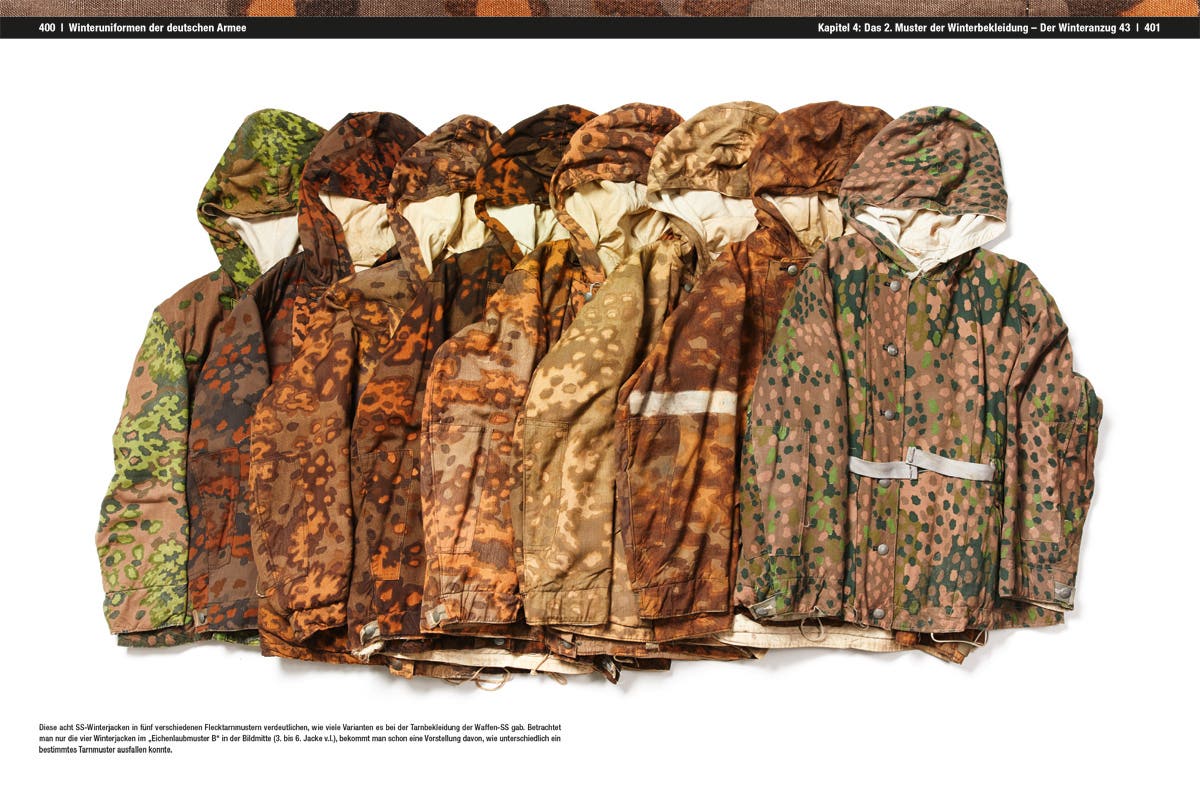

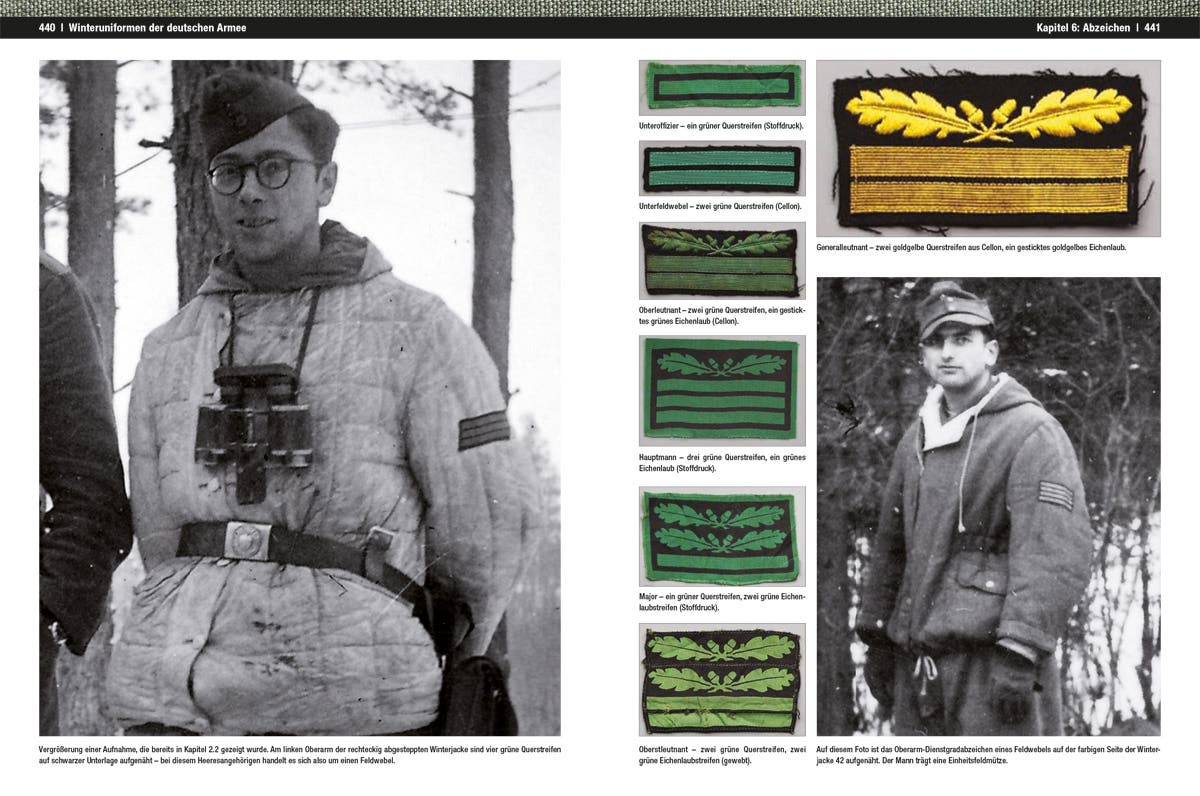
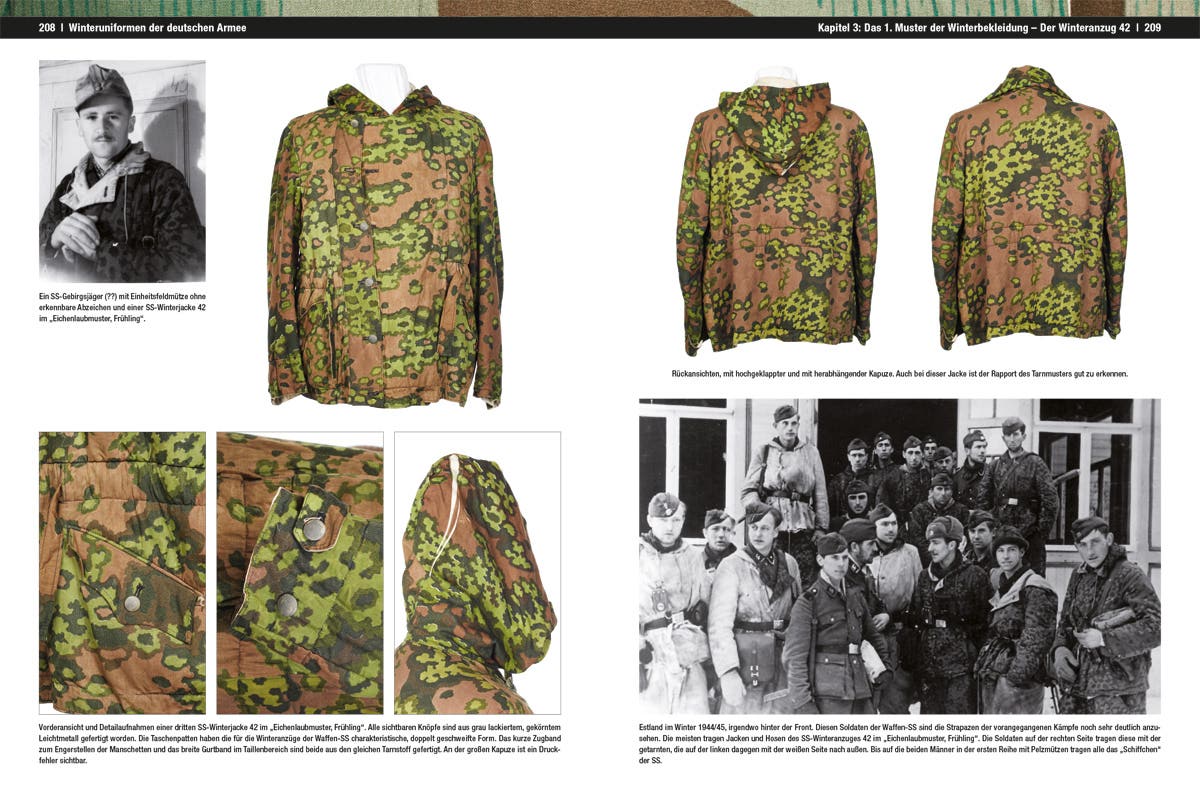

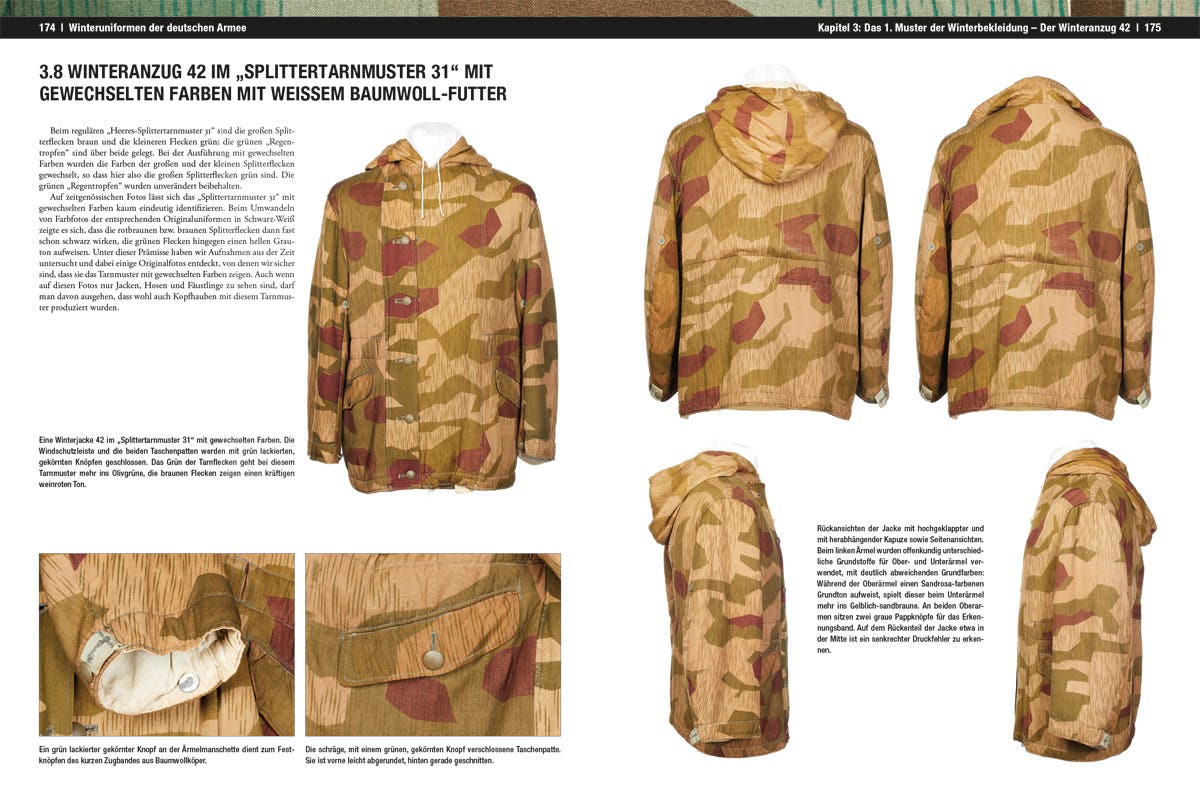
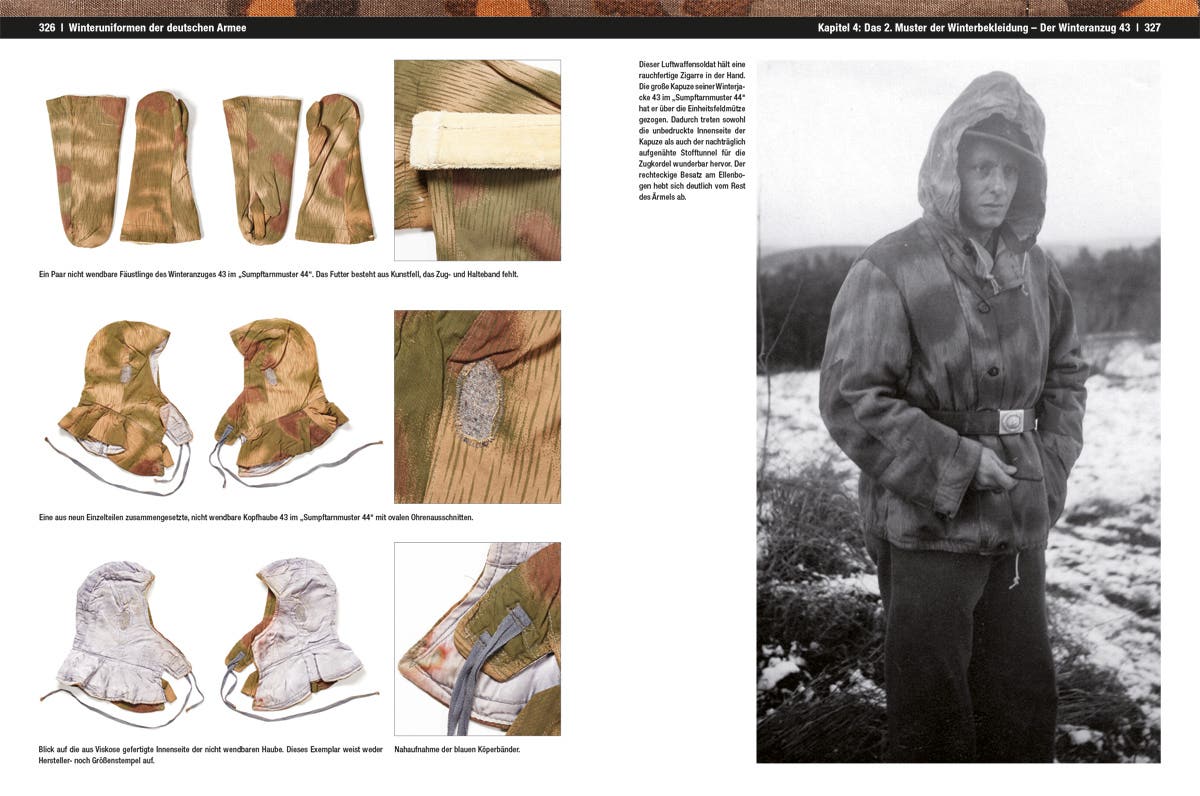
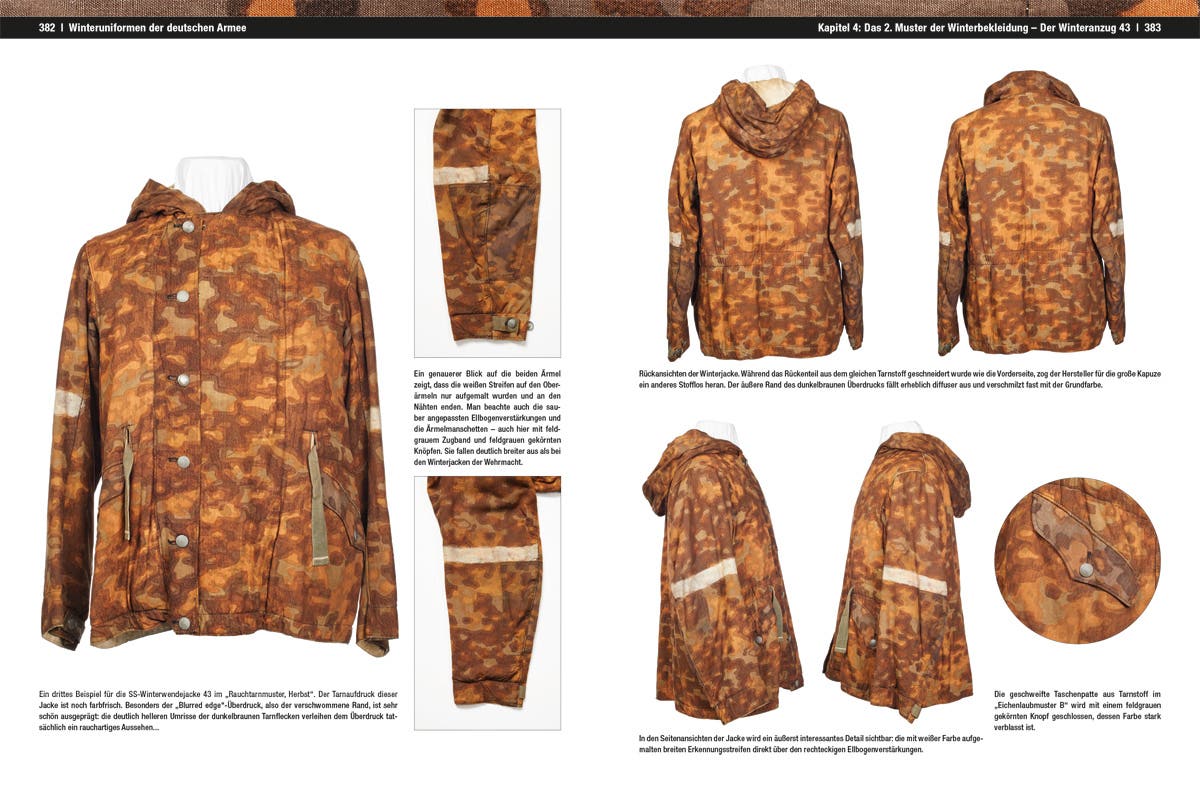
Discrete chapters cover the different branches with their many distinctions and similarities, large and small. For the collector and historian, I’m sure there are lots of “clues” and many blanks filled in, questions answered.
Likewise valuable are complementary short sections on special SS Panzer and Luftwaffe work coveralls, and ancillaries like hoods, balaclavas, mittens, colored ID arm and ranks strips etc.
There is even a nod to (and period in-wear photos of!) 1945’s infrared-defeating and stupendously rare “Liebermuster” uniform. This pattern, the author notes, was meant to replace all the services’ previous ones.
Palinckx even pulls together a wealth of data and photos of fabrics, buttons, drawstring variations, suspenders, quilted versus padded, reversible versus non-reversible, white cotton versus dark rayon linings, and a great deal more.
Clearly, all this lore is a great boon to collectors, military uniform students, museum curators, modelers, archivists and the simply curious.
Much pictured material is from the author’s collection, with many contributions shared by museum curators, archivists and fellow collectors.
In sum, if you’re seeking a super deep-dive Palinckx has you covered; or more accurately, surrounded! Winter Uniforms an outstanding reference work, highly recommended. — DW
You may also enjoy
*As an Amazon Associate, Military Trader / Military Vehicles earns from qualifying purchases.







